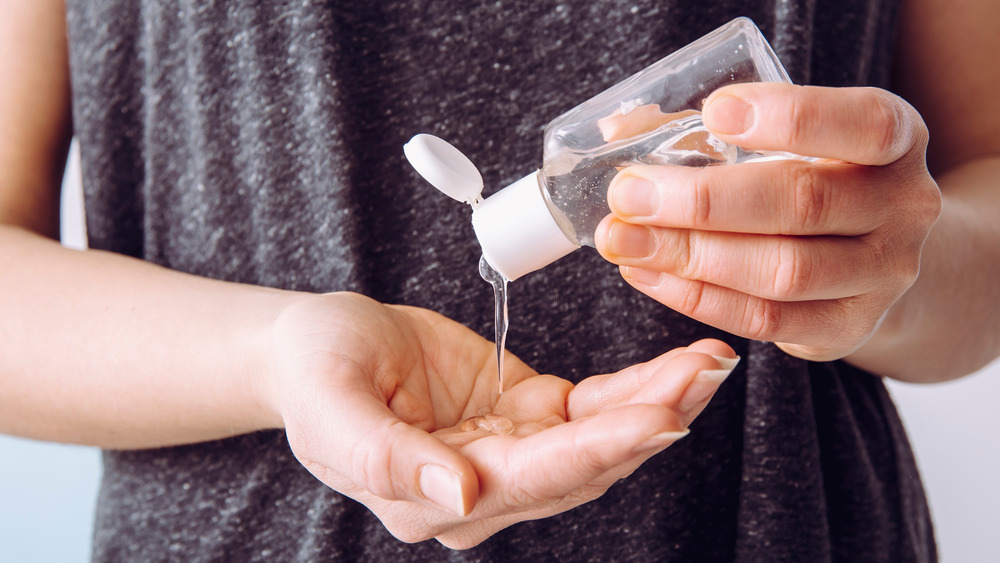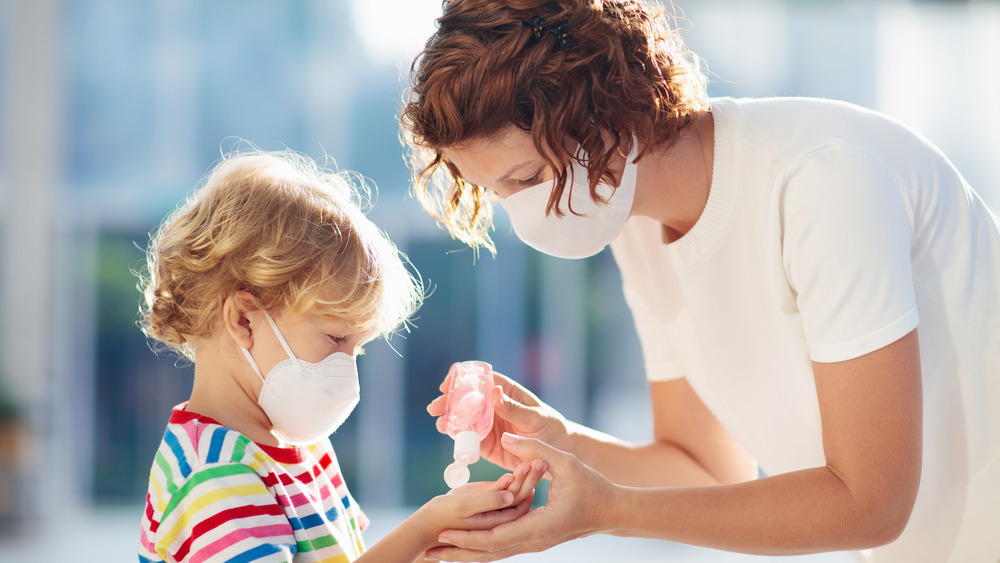The Surprising Way Hand Sanitizer Can Damage Children's Eyes
Hand sanitizer is a fact of life these days. Most people have a bottle on hand, and stylized holders are even popping up all over the place for people who carry any with them. It's just the smart thing to do. And businesses know it too. That's why there are bottles of hand sanitizer at almost every register and on most counters these days. Using hand sanitizer when you have to leave the house is a great way to slow the spread of COVID-19, but that doesn't mean it's without risk, especially to kids. But don't throw away your hand sanitizer just yet.
The danger isn't the hand sanitizer on a child's skin — it's the effect the sanitizer has when it gets into the child's eye. This issue gained popularity after the Poison Control Center of West France reported that seven times more children suffered chemical eye injuries in 2020 than in 2019. The information was used as part of a collaborative study published January 21, 2021, in the Journal of American Medical Association Ophthalmology.
As scary as that increase sounds, however, the numbers are a little misleading. The rate of injury went up, yes. But in 2020 hand sanitizer only caused 9.9 percent of chemical eye injuries in children, up from 1.3 percent in 2019. Even then, the majority of that 9.9 percent were mild cases, with only two cases requiring intervention as extreme as tissue transplant surgery
The exposure point of hand sanitizer
Some might think this increase in exposure is because of those little squeeze bottles most stores sell now — the cute ones with Paw Patrol and Minions on them. But the cases associated with personal bottles or sanitizer on a child's hands were mild.
The source of more serious chemical exposures turned out to be bottles and automatic dispensers installed in public places. Most of the time the dispensers are placed at what most adults consider hand-height. Unfortunately, this means that they're a little above eye level for small children at the age where they learn through touch. This unfortunate combination is the cause of nearly every reported case in the study. Curious children play with the dispenser and end up getting hand sanitizer in their face as a result.
Parents around the world will tell you that you can't keep an eye on your child all the time. And with so many kids cooped up at home, they're even more prone to playing with things when they get a chance to leave the house. Add in a new bottle or machine that their parents get to touch, and the exposure rate starts to make sense.
Hand sanitizer isn't going away any time soon, especially the dispensers in public places. But moving the bottles back from counter edges might help reduce accident rates until the pandemic is under control and sanitizer isn't the daily necessity it is today — and parents should keep a close eye on their kids when they're near one of these dispensers.


